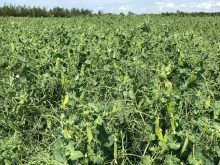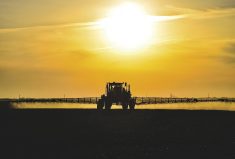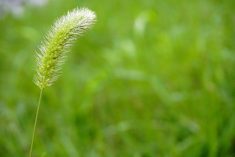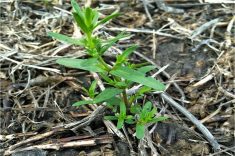A crop desiccant is an herbicide intended for the rapid drydown of the crop, not for long-term weed management. So it shouldn’t come as a surprise that applying a diquat-based desiccant entails a few distinctive “best practices.”
Firstly, you need to use a higher water volume. Contact desiccants should be applied with at least 20 gal/ac of water, double what many systemic herbicides require. A desiccant is a true contact herbicide and will only drydown the foliage it directly contacts. Higher water volumes ensure that the desiccant distributes optimally across the leaf surface and deeper into the canopy.
Read Also

Cancer agency reclassifies another herbicide ‘probably carcinogenic’
The WHO’s cancer research agency has now put atrazine, a herbicide well known to corn growers, in the same potential-hazard category where the agency put glyphosate.
- More Grainews: Drying with desiccants in pulse crops
Secondly, a crop desiccant is best applied in the evening. The reasons are two-fold. First, cooler evenings minimize evaporation of the desiccant solution, so the active ingredient has time to spread, along with the water, across the leaves. Second, diquat breaks down in sunlight. Therefore, an evening application results in less breakdown and a more complete drydown of the crop canopy.
Finally, be sure to use the proper surfactant at the proper rate, if required. With diquat-based products, you’ll need a non-ionic surfactant at the appropriate concentration. Alternatively, look for a product that has a built-in surfactant to minimize the risk of errors during mixing.
This agronomy tip first appeared in the July 22, 2014 edition of Grainews















